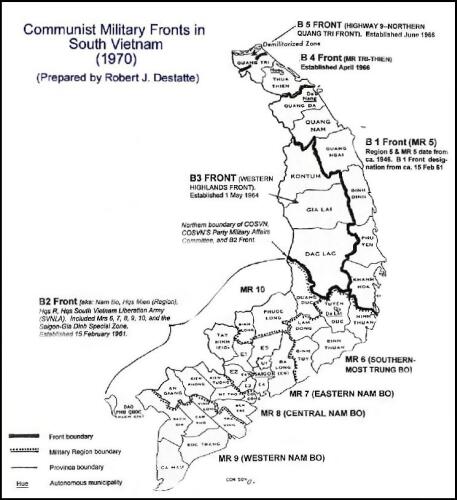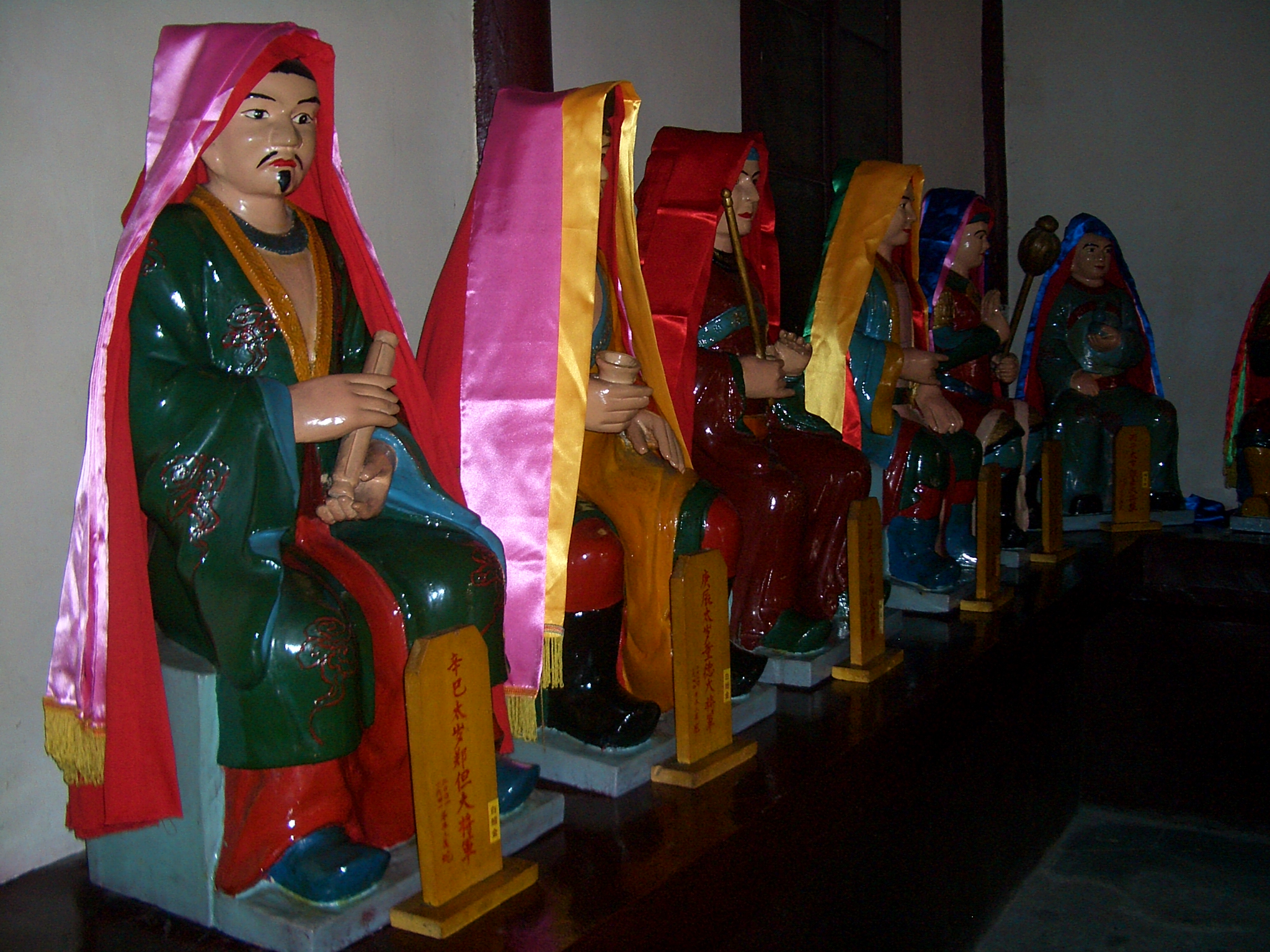|
Tet Offensive
The Tet Offensive was a major escalation and one of the largest military campaigns of the Vietnam War. The Viet Cong (VC) and North Vietnamese People's Army of Vietnam (PAVN) launched a surprise attack on 30 January 1968 against the forces of the South Vietnamese Army of the Republic of Vietnam (ARVN), the United States Armed Forces and their allies. It was a campaign of surprise attacks against military and civilian command and control centers throughout South Vietnam. The name is the truncated version of the Lunar New Year festival name in Vietnamese, Tết Nguyên Đán, with the offense chosen during a holiday period as most ARVN personnel were on leave. The purpose of the wide-scale offensive by the Hanoi Politburo was to trigger political instability in a belief that mass armed assault on urban centers would trigger defections and rebellions. The offensive was launched prematurely in the early morning hours of 30 January in large parts of the I and II Corps Tactical Z ... [...More Info...] [...Related Items...] OR: [Wikipedia] [Google] [Baidu] |
Vietnam War
The Vietnam War (1 November 1955 – 30 April 1975) was an armed conflict in Vietnam, Laos, and Cambodia fought between North Vietnam (Democratic Republic of Vietnam) and South Vietnam (Republic of Vietnam) and their allies. North Vietnam was supported by the Soviet Union and China, while South Vietnam was supported by the United States and other anti-communist nations. The conflict was the second of the Indochina wars and a proxy war of the Cold War between the Soviet Union and US. The Vietnam War was one of the postcolonial wars of national liberation, a theater in the Cold War, and a civil war, with civil warfare a defining feature from the outset. Direct United States in the Vietnam War, US military involvement escalated from 1965 until its withdrawal in 1973. The fighting spilled into the Laotian Civil War, Laotian and Cambodian Civil Wars, which ended with all three countries becoming Communism, communist in 1975. After the defeat of the French Union in the First Indoc ... [...More Info...] [...Related Items...] OR: [Wikipedia] [Google] [Baidu] |
Trần Văn Trà
Nguyễn Chấn, known as Trần Văn Trà (15 September 1919 – 20 April 1996) was a colonel-general in the People's Army of Vietnam. He was Commander of B2 Front during 1963 – 1967, Deputy Commander of Liberation Army of South Vietnam during 1968 – 1972; member of the Central Committee of the Workers' Party of Vietnam from 1960 to 1982 (3rd and 4th terms) and second chairman of Saigon administration after Fall of Saigon. Early life The son of a bricklayer, Trần Văn Trà was born in Quảng Ngãi Province in 1918. He joined the Indochinese Communist Party in 1938 and spent the years of the Second World War in a French prison. Between 1946 and 1954, Trà fought against the French in the Vietnam People's Army and became a general in 1961, commanding communist forces in the southern half of South Vietnam. During the days of The First Indochina War with the French, the Viet Minh recruited more than 600 defeated Japanese soldiers to fight with them. In June 1946, some ... [...More Info...] [...Related Items...] OR: [Wikipedia] [Google] [Baidu] |
Politburo
A politburo () or political bureau is the highest organ of the central committee in communist parties. The term is also sometimes used to refer to similar organs in socialist and Islamist parties, such as the UK Labour Party's NEC or the Political Bureau of Hamas. Politburos are part of the governing structure in most former and existing states. Names The term ''politburo'' in English comes from the Russian ''politbyuro'' (), itself an abbreviation of ''politicheskoye byuro'' ( 'political bureau'). The Spanish term ''Politburó'' is directly loaned from Russian, as is the German ''Politbüro''. Chinese uses a calque (), from which the Vietnamese ( ), and Korean ( ''Jeongchiguk'') terms derive. History The first politburo was created in Russia by the Bolshevik Party in 1917 during the Russian Revolution that occurred during that year. The first Politburo had seven members: Vladimir Lenin, Grigory Zinoviev, Lev Kamenev, Leon Trotsky, Joseph Stalin, Grigori Sokol ... [...More Info...] [...Related Items...] OR: [Wikipedia] [Google] [Baidu] |
Tết
Tết (, ), short for (; ), is the most important celebration in Vietnamese culture. Tết celebrates the arrival of spring based on the Vietnamese calendar and usually falls on January or February in the Gregorian calendar. is not to be confused with Tết Trung Thu, which is also known as Children's Festival in Vietnam. "'" itself only means festival but it would generally refer to the Lunar New Year in Vietnamese, as it is often seen as the most important festival amongst the Vietnamese and the Vietnamese diaspora, with regarded as the second-most important. Vietnamese people celebrate annually, which is based on a lunisolar calendar (calculating both the motions of Earth around the Sun and of the Moon around Earth). Tết is generally celebrated on the same day as Chinese New Year (also called Spring Festival), with the one-hour time difference between Vietnam and China resulting in the new moon occurring on different days. Rarely, the dates of Vietnamese and Chine ... [...More Info...] [...Related Items...] OR: [Wikipedia] [Google] [Baidu] |
Unintended Consequence
In the social sciences, unintended consequences (sometimes unanticipated consequences or unforeseen consequences, more colloquially called knock-on effects) are outcomes of a purposeful action that are not intended or foreseen. The term was popularized in the 20th century by American sociologist Robert K. Merton. and later used to prevent erosion in earthworks, has become a major problem in the Southeastern United States. Kudzu has displaced native plants and has effectively taken over significant portions of land. The protection of the steel industry in the United States reduced production of steel in the United States, increased costs to users, and increased unemployment in associated industries. Perverse results In 2003, Barbra Streisand unsuccessfully sued Kenneth Adelman and Pictopia.com for posting a photograph of her home online. Before the lawsuit had been filed, only 6 people had downloaded the file, two of them Streisand's attorneys. The lawsuit drew attention to ... [...More Info...] [...Related Items...] OR: [Wikipedia] [Google] [Baidu] |
United States Armed Forces
The United States Armed Forces are the Military, military forces of the United States. U.S. United States Code, federal law names six armed forces: the United States Army, Army, United States Marine Corps, Marine Corps, United States Navy, Navy, United States Air Force, Air Force, United States Space Force, Space Force, and the United States Coast Guard, Coast Guard. Since 1949, all of the armed forces, except the Coast Guard, have been permanently part of the United States Department of Defense. They form six of the eight uniformed services of the United States. Each of the different military services is assigned a role and domain. The Army conducts land operations. The Navy and Marine Corps conduct maritime operations, the Marine Corps specializing in amphibious and maritime littoral operations primarily for supporting the Navy. The Air Force conducts air operations. The Space Force conducts space operations. The Coast Guard is unique in that it specializes in maritime opera ... [...More Info...] [...Related Items...] OR: [Wikipedia] [Google] [Baidu] |
Republic Of Vietnam Military Forces
The Republic of Vietnam Military Forces (RVNMF; – QLVNCH), were the armed forces of the Republic of Vietnam and were responsible for the defence of the country from 8 December 1950''A Brief Overview of the Vietnam National Army and the Republic of Vietnam Armed Forces''(1952-1975) , Stephen Sherman and Bill Laurie to 30 April 1975. Its predecessor, the Vietnamese National Army, was the armed forces of the (formed in 1949), before i ... [...More Info...] [...Related Items...] OR: [Wikipedia] [Google] [Baidu] |
People's Army Of Vietnam
The People's Army of Vietnam (PAVN), officially the Vietnam People's Army (VPA; , , ), also recognized as the Vietnamese Army (), the People's Army () or colloquially the Troops ( ), is the national Military, military force of the Vietnam, Socialist Republic of Vietnam and the armed wing of the ruling Communist Party of Vietnam, Communist Party of Vietnam (CPV). The PAVN is the backbone component of the Vietnam People's Armed Forces and includes: Ground Force, Vietnam People's Navy, Navy, Vietnam People's Air Force, Air Force, Vietnam Border Guard, Border Guard and Vietnam Coast Guard, Coast Guard. Vietnam does not have a separate and formally-structured Ground Force or Army service. Instead, all ground troops, army corps, military districts and special forces are designated under the umbrella term combined arms () and belong to the Ministry of Defence (Vietnam), Ministry of National Defence, directly under the command of the Central Military Commission (Vietnam), CPV Central ... [...More Info...] [...Related Items...] OR: [Wikipedia] [Google] [Baidu] |
North Vietnam
North Vietnam, officially the Democratic Republic of Vietnam (DRV; ; VNDCCH), was a country in Southeast Asia from 1945 to 1976, with sovereignty fully recognized in 1954 Geneva Conference, 1954. A member of the communist Eastern Bloc, it opposed the French-supported State of Vietnam and later the Western-allied South Vietnam, Republic of Vietnam (South Vietnam). The DRV Fall of Saigon, invaded Saigon in 1975 and ceased to exist the following year when it Reunification Day, merged with Provisional Revolutionary Government of the Republic of South Vietnam, the south to become the current Vietnam, Socialist Republic of Vietnam. During the August Revolution following French Indochina in World War II, World War II, Vietnamese communist revolutionary Ho Chi Minh, Hồ Chí Minh, leader of the Viet Minh, Việt Minh Front, Proclamation of Independence of the Democratic Republic of Vietnam, declared independence on 2 September 1945 and proclaimed the creation of the Democratic Repu ... [...More Info...] [...Related Items...] OR: [Wikipedia] [Google] [Baidu] |
Sexagenary Cycle
The sexagenary cycle, also known as the gānzhī (干支) or stems-and-branches, is a cycle of sixty terms, each corresponding to one year, thus amounting to a total of sixty years every cycle, historically used for recording time in China and the rest of the East Asian cultural sphere, as well as in Southeast Asia. It appears as a means of recording days in the first Chinese written texts, the oracle bones of the late second millennium BC Shang dynasty. Its use to record years began around the middle of the 3rd century BC. The cycle and its variations have been an important part of the traditional calendrical systems in Chinese-influenced Asian states and territories, particularly those of Japan, Korea, and Vietnam, with the old Chinese system still in use in Taiwan, and in Mainland China. In India, the Ahom people (descendants of the Dai people of Yunnan who migrated to Assam in the 13th century) also used the sexagenary cycle known as Lak-Ni. This traditional metho ... [...More Info...] [...Related Items...] OR: [Wikipedia] [Google] [Baidu] |
Chinese Zodiac
The Chinese zodiac is a traditional classification scheme based on the Chinese calendar that assigns an animal and its reputed attributes to each year in a repeating twelve-year (or duodenary) cycle. The zodiac is very important in traditional Chinese culture and exists as a reflection of Chinese philosophy and Chinese culture, culture. Chinese folkways held that one's personality is related to the attributes of their zodiac animal. Originating from China, the zodiac and its variations remain popular in many East Asian and Southeast Asian Sovereign state, countries, such as Japan, South Korea, Vietnam, Singapore, Nepal, Bhutan, Cambodia, and Thailand. Identifying this scheme as a "''zodiac''" reflects superficial similarities to the western astrology, Western zodiac: both divide time cycles into twelve parts, label the majority of those parts with animals, and are used to ascribe a person's personality or events in their life to the person's particular relationship to the cycle. ... [...More Info...] [...Related Items...] OR: [Wikipedia] [Google] [Baidu] |









